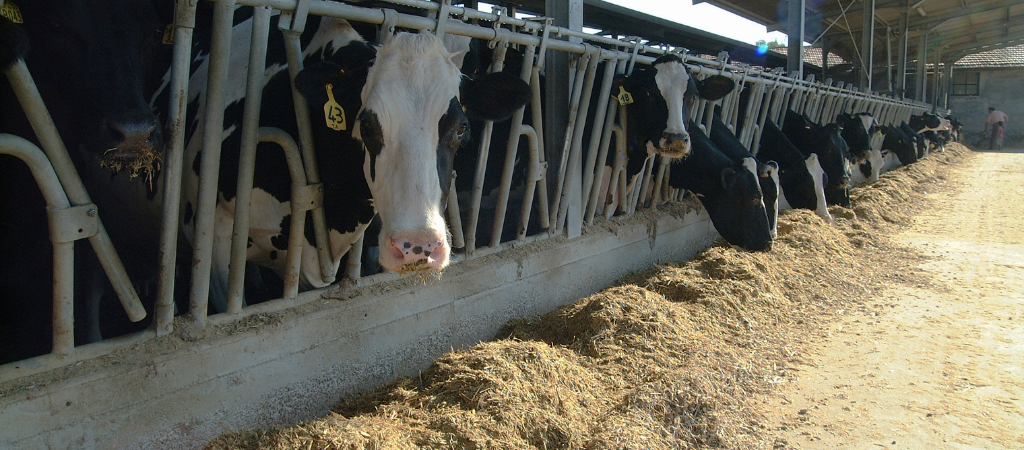Antibiotics are powerful tools against infections. Bacteria can rapidly develop resistance to antimicrobials, and this is a selective advantage that we must consider.
A prudent use is, more than ever, needed, thinking of antibiotics as a last resource. Prevention and control become substantial.
Despite their potential in tackling infections, antibiotics do not help with regeneration of damaged udder tissue.
As we discussed in the past1, when it occurs, mammary tissue damage reduces the quantity and activity of epithelial cells, consequently contributing to a decrease in milk production. Scientific literature shows that this damage can be induced by either apoptosis or necrosis, two death mechanisms characterized by specific morphological, biochemical, and molecular variations in dying cells.
The teat canal represents the first line of defense of the bovine mammary gland. Bacteria can overcome this barrier, entering the gland and causing infections. In the mammary gland, cellular and humoral mechanisms represent other lines of defense.
If the infection is not eradicated, bacteria proliferate and start damaging mammary epithelium. The tissue damage proceeds until the loss of structural integrity of alveoli and the breach of the blood-milk barrier. As a consequence, the somatic cell count in milk rises and changes in milk and udder can be observed.
In addition, the immune response involves different chemical reactions that further worsen the tissue damage (Zhao and Lacasse, 2008)2.
Besides the function as a cellular barrier, there is evidence that epithelial cells are vital in defense responses. In addition to acting as initial sensors of dangers, their integrity is critical to their immunocompetence and role as a physical barrier against harmful molecules and microorganisms (Günther and Seyfert, 2018)3. This means that, potentially, udder tissue can autonomously manage infections.
The integrity of the mammary epithelium is one of the several factors affecting the disposition of drugs after intramammary administration.
In order to be effective, the antibiotic needs to have specific antimicrobial action at the site of infection. Thus, first of all, it needs itself to be effective at mammary level (e.g., having the ability to be effective at specific pH values).
In the presence of severe inflammation and swelling, the diffusion of the antibiotic through the mammary ducts can be compromised. Moreover, some bacteria, such as Staphylococcus aureus, can invade the epithelium tissue preventing the interaction with antibiotics because of the formation of fibrous scar tissue. This could also mean no blood supply, rendering the therapy less effective.
Moreover, bacteria have the ability to form biofilms4. Significant genetic and physiological changes occur in those bacteria forming the biofilm, with a resulting effect of loss of sensitivity to antibiotics.
Supporting and protecting the mammary epithelium is essential both for its ability of intervening in autonomous defense mechanisms and for the effectiveness of an antibiotic therapy.
Aiming at the reduction of veterinary medicinal products in general (and antibiotics in particular), OZOLEA designed a tool, OZOLEA-MAST, which combines a new concept for physical udder tissue support and protection with improved herd management practices.
The versatility of OZOLEA-MAST makes it the ideal tool to use for multiple applications when dealing with udder issues, even when full-blown mastitis is ongoing and we use an antibiotic.
Why? Because the physical film barrier created by OZOLEA-MAST generates an uncomfortable environment for bacteria, thus slowing down the aggressiveness of possible bacterial attacks. Moreover, it reserves a respite for the tissue from exposure to the external environment and from bacterial attack, allowing it to proceed with the natural regeneration process.
Since the effectiveness of antibiotics is also influenced by tissue conditions, it means the antibiotic does more than interacting synergistically with a less stressed tissue.
Also in this case, the application of OZOLEA-MAST and the verification of the results must be carried out upon veterinary advice. The product will be applied in the milking following that of the antibiotic application, until we have used all the applicators of OZOLEA-MAST (8 applicators in 1 box).
Furthermore, we will have to follow withdrawal periods prescribed for the antibiotic and make sure, through proper testing, that the residue concentrations in the milk comply with the legal parameters.
1 What changes in milk tell us when we forestrip.
https://www.ozolea.it/what-changes-in-milk-tell-us-when-we-forestrip/
2 Zhao X., Lacasse P., 2008. Mammary tissue damage during bovine mastitis: Causes and control. J. Anim. Sci. 2008. 86(Suppl. 1):57–65 doi: 10.2527/jas.2007-0302
3 Günther J., Seyfert H.-M., 2018. The first line of defence: insights into mechanisms and relevance of phagocytosis in epithelial cells. Seminars in Immunopathology. (2018) 40:555–565 doi: https://doi.org/10.1007/s00281-018-0701-1
4 Reneé Pieterse, Svetoslav D. Todorov, 2010. Bacteriocins: exploring alternatives to antibiotics in mastitis treatment. Review – Braz. J. Microbiol. 41 (3) – Oct 2010
DOI: https://doi.org/10.1590/S1517-83822010000300003
5 Recurrent mastitis in dairy cows: the role of bacterial biofilms.
https://www.ozolea.it/recurrent-mastitis-in-dairy-cows-the-role-of-bacterial-biofilms/

